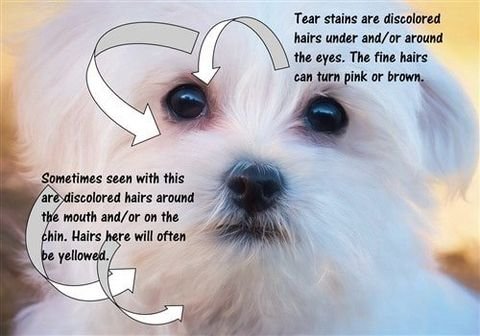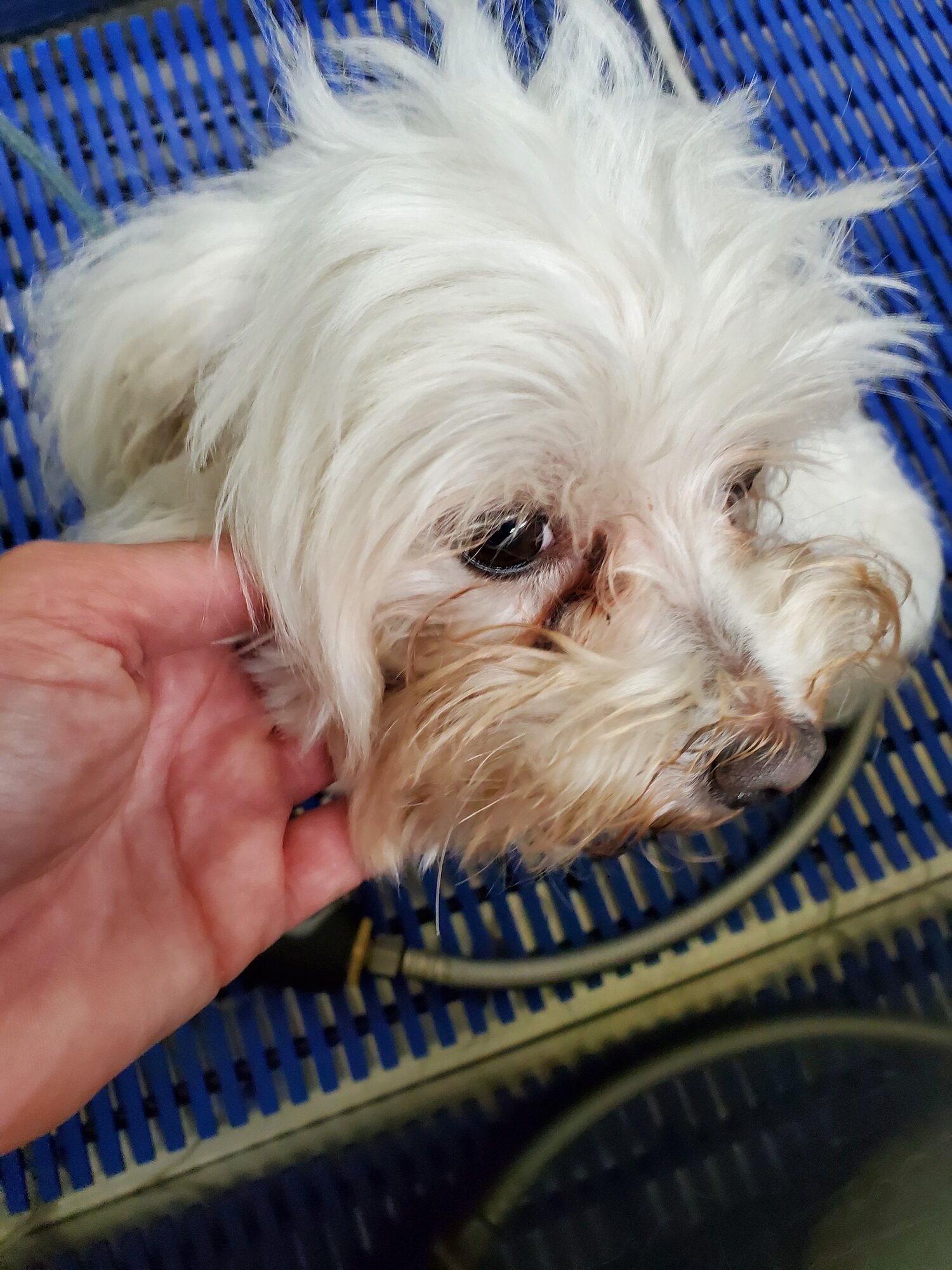Have you ever wondered if all Maltese dogs have tear stains? Well, you might be surprised to learn that tear stains are a common occurrence among Maltese, and it can be quite a concern for their owners. These eye stains are caused by excessive tear production, which can lead to discoloration around the eyes. But fear not, as there are ways to manage and minimize these tear stains to keep your Maltese looking their best.
Maltese dogs are known for their beautiful white coats and expressive eyes, but tear stains can detract from their overall appearance. These stains are often caused by a combination of factors, including their genetics, tear duct structure, and environmental factors such as allergies or eye infections. While tear stains are more commonly seen in Maltese, not all of them will develop them, as individual variations and care routines can play a role. Regular grooming and keeping the area around the eyes clean can help prevent tear stains, but in some cases, you may need to consult with a veterinarian for additional solutions such as specialized diets or tear stain removal products. By addressing the underlying causes and taking appropriate measures, you can help your Maltese maintain a tear-stain-free, vibrant appearance.
Discover the truth about Maltese tear stains! While tear stains are common in many Maltese dogs, not all of them experience this issue. The presence of tear stains can be influenced by factors like genetics, diet, and grooming habits. To prevent or minimize tear stains, ensure your Maltese has a balanced diet, regular eye cleaning routine, and visit the vet if necessary. With proper care, your Maltese can have a tear-stain-free appearance!
-min-500x350-478w.jpg)
Do All Maltese Have Tear Stains?
Maltese dogs are known for their beautiful white coats and charming personalities. However, one common issue that many Maltese owners face is tear stains. These reddish-brown streaks that appear under the eyes can be unsightly and often lead to questions about whether all Maltese dogs have tear stains. In this article, we will dive into the world of tear stains in Maltese dogs and explore the reasons behind their occurrence, as well as provide tips on how to prevent and manage them.
What Causes Tear Stains in Maltese Dogs?
When it comes to tear stains in Maltese dogs, there are several factors that contribute to their development. One primary cause is excessive tear production. Maltese dogs naturally produce tears to keep their eyes lubricated and to wash away dirt and debris. However, some Maltese may produce more tears than others, leading to a buildup of moisture and eventually resulting in tear stains.
The composition of the tears can also play a role in the development of tear stains. Tears contain pigments, such as iron and porphyrin, which can oxidize and turn a reddish-brown color when exposed to air. This discoloration is more noticeable on the white fur of Maltese dogs, leading to the appearance of tear stains.
Another contributing factor to tear stains in Maltese dogs is the shape and structure of their faces. Maltese have a flat or brachycephalic face, which means that their facial structure can affect the flow of tears. Some Maltese have shallow tear ducts or narrow nasal passages, causing a disruption in tear drainage. This leads to tears overflowing onto the fur around the eyes, resulting in tear stains.
Understanding the Genetics of Tear Stains
While tear stains can affect any Maltese dog, it is important to note that genetics can also play a role in their development. Some Maltese dogs may be more prone to tear stains due to their genetic makeup. It is believed that certain genes can contribute to the overproduction of tears or alter the composition of tears, making them more prone to discoloration. If a Maltese dog comes from a line with a history of tear stains, it is more likely that they will also develop tear stains.
It is crucial to understand that tear stains are not a health concern for Maltese dogs. They do not cause any harm or discomfort to the dog. However, tear stains should not be ignored, as they can indicate underlying issues such as eye infections or allergies. If you notice excessive tearing, redness, or irritation in your Maltese’s eyes, it is best to consult with a veterinarian to rule out any potential health problems.
Now that we have explored the causes of tear stains in Maltese dogs, let’s dive into some practical tips on how to prevent and manage tear stains.
Tips for Preventing and Managing Tear Stains
While it may not be possible to completely eliminate tear stains in all Maltese dogs, there are several strategies that can help prevent their formation or minimize their appearance:
1. Regular Eye Cleaning:
- Gently clean your Maltese’s eyes with a damp cloth or a veterinarian-recommended eye solution to remove any tear residue and prevent staining.
- Be careful not to get any cleaning solution or water directly in your dog’s eyes, as this can cause irritation.
2. Maintain Good Facial Hygiene:
- Keep the fur around your Maltese’s eyes trimmed to prevent tears from being trapped and causing stains.
- Regularly brush your dog’s face to remove any dirt or debris that may contribute to tear staining.
3. Address Underlying Health Issues:
- If you notice excessive tearing or signs of eye irritation, consult with a veterinarian to rule out any underlying health conditions.
- Treat any eye infections or allergies promptly to prevent further tear staining.
4. Diet and Nutrition:
- Provide a balanced diet that meets your Maltese’s nutritional needs.
- Avoid feeding foods that contain artificial colors, preservatives, or allergens, as these can potentially worsen tear staining.
- Consider adding supplements like Omega-3 fatty acids or specialized tear stain supplements to your Maltese’s diet, as they may help improve tear quality.
Conclusion
Tear stains are a common issue faced by many Maltese owners, but not all Maltese dogs will develop tear stains. The causes of tear stains can vary, including excessive tear production, tear composition, and facial structure. While genetics can also play a role, it’s important to note that tear stains are not a health concern for Maltese dogs. By implementing preventative measures and maintaining good facial hygiene, owners can effectively manage tear stains and keep their Maltese looking their best.
Key Takeaways: Do all Maltese have tear stains?
- Not all Maltese dogs have tear stains.
- Tear stains are more common in some Maltese dogs due to their genetics.
- Excessive tearing can result in tear stains, which may require regular cleaning.
- Keeping the eyes and face clean can help prevent tear stains.
- If tear stains persist, consult a veterinarian for further advice and treatment options.
Frequently Asked Questions
Welcome to our FAQ section where we answer common questions about tear stains in Maltese dogs!
1. Why do some Maltese dogs have tear stains?
Tear stains in Maltese dogs are often caused by excessive tearing or eye discharge. This can occur due to a variety of reasons including allergies, eye infections, blocked tear ducts, or even the shape of the dog’s face. Some Maltese are more prone to tear stains due to their genes or specific health conditions.
To minimize tear stains, it’s important to keep the area around the dog’s eyes clean and free from any matted fur. Regularly wiping the area with a damp cloth can help prevent tear staining. If you notice excessive tearing or persistent tear stains, it’s best to consult with a veterinarian for a proper diagnosis and treatment.
2. Are all Maltese dogs predisposed to tear stains?
While tear stains can be common in Maltese dogs, not all of them will develop tear stains. The likelihood of tear staining can vary from dog to dog, depending on various factors such as genetics, overall health, and environmental conditions. Some Maltese dogs may have minimal tear staining or none at all.
However, if tear staining does occur, it’s important to address the underlying causes to minimize its occurrence and prevent any potential health issues. Regular grooming and proactive eye care can help reduce the chances of tear stains in Maltese dogs.
3. How can I prevent tear staining in my Maltese?
To prevent tear staining in your Maltese, there are several steps you can take. Start by regularly cleaning the area around your dog’s eyes using a damp cloth or special tear stain wipes. This removes any dirt or debris that can contribute to tear staining.
Additionally, it’s essential to ensure your Maltese has a healthy diet and proper grooming routine. A high-quality diet can support overall eye health, while regular grooming prevents tear build-up and keeps the area around the eyes clean. If tear staining persists or worsens, consult with your veterinarian for further guidance.
4. Can tear staining be a sign of an underlying health problem?
Yes, tear staining in Maltese dogs can sometimes be a sign of an underlying health problem. Excessive tearing or persistent tear staining can indicate various issues such as allergies, eye infections, blocked tear ducts, or even a corneal ulcer. It’s important to monitor your dog’s tear stains and consult with a veterinarian if you notice any changes or concerns.
The veterinarian will be able to examine your Maltese, conduct necessary tests, and determine if there is an underlying health issue contributing to the tear staining. Early detection and proper treatment of any underlying problems can help prevent further complications and improve your dog’s overall well-being.
5. Are there any home remedies for removing tear stains?
While there are several home remedies commonly suggested for removing tear stains, it’s important to approach them with caution. Some popular remedies involve using hydrogen peroxide, apple cider vinegar, or special tear stain removers. However, these remedies may not be suitable for all dogs and can potentially cause skin or eye irritation.
Before trying any home remedies, it’s best to consult with a veterinarian. They can provide guidance on safe and effective ways to remove tear stains, considering your dog’s specific needs. They may recommend specific products or provide professional grooming services to address tear staining in a safe and appropriate manner.

